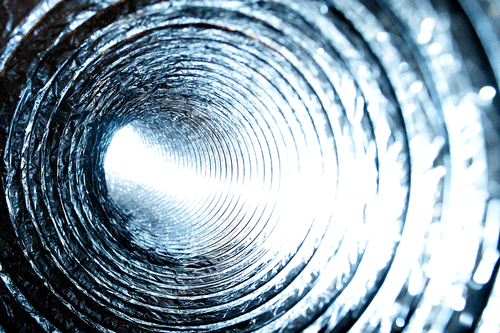
If your home is beyond 15-20 years old, and has the same ductwork it had when it was built, there’s a good chance the ducts are no longer doing a good job of delivering conditioned air to the rooms in your house, or drawing that air back to the HVAC equipment to be heated and cooled again. Deteriorating, old ductwork will result in higher energy bills and degraded comfort.
The increased energy usage occurs when air leaks from faulty ducts into unconditioned parts of your home, including crawl spaces, the garage, and wall cavities or voids. Your furnace, A/C or heat pump must work harder to compensate for that lost conditioned air. Leaky ducts also can result in “backdrafts,” as dirty or carbon-monoxide infected air gets drawn back into your home’s living spaces.
How Can You Tell the Ducts are Bad?
Consider the following if you have an older home:
- The first red flag is obvious — if the ductwork is really old, say in excess of 15-20 years, at the very least get it inspected. Those ducts likely need replacement. If you’re not sure when the ductwork was installed, a qualified inspector should be able to tell you whether it’s part of the original infrastructure of the house.
- Take a look at accessible, viewable ductwork sections. If they’re not tightly connected, or have deteriorating duct tape or obvious corrosion or rusting, your old ductwork needs some attention, either through repairs or replacement.
- If your energy bills have been going up in recent years, and there’s no obvious reason (such as more home occupants or higher rates), old ductwork might be at fault.
What Can You Do About Old Ductwork?
As mentioned, an inspection by a qualified HVAC technician, equipped with modern diagnostic equipment, is the first step. They should be able to assess the quality of your ducts, and recommend a course of action.
For help deciding how to proceed with your home’s old, deteriorating ductwork, please contact us at Jackson & Sons Heating & Air Conditioning. We provide superior HVAC services to communities in Eastern North Carolina.
Our goal is to help educate our customers in Eastern North Carolina (including Wayne, Johnston, Greene, Lenoir, Pitt and Duplin Counties) about energy and home comfort issues (specific to HVAC systems).
Credit/Copyright Attribution: “Bernard Zajac/Shutterstock”